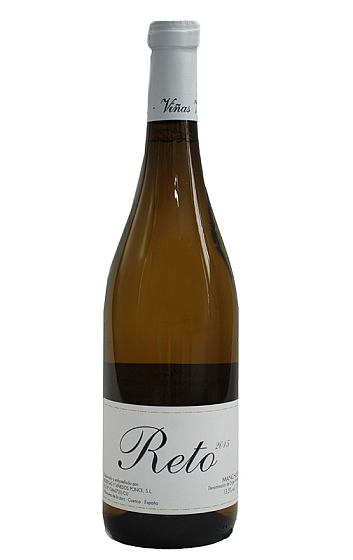Reto 2015
Descripción
La Albilla de Manchuela es posiblemente la variedad más antigua de la que se tiene registro en Manchuela. Se encuentra en su totalidad - unas 50 hectáreas - en un pueblo que se llama Villamalea, aunque no se sabe su origen anterior. Genéticamente no tienen parentesco con los albillos conocidos en Gredos o Ribera del Duero. Estamos ante un reto, como bien indica su nombre, el de elaborar un blanco con personalidad, en los que quede patente la mineralidad y que tenga potencial de envejecimiento.
Ficha técnica
Cata
Viñedo y elaboración
Opinión de los críticos
The white 2015 Reto was bottled only one month before I tasted it. They wanted a white with personality, different to what's fashioned in the region; they wanted a white with freshness, good acidity, minerality and aging potential. The Albillo from Manchuela (only grown in Villamalea) is different from the other Albillo from other regions of Spain (Gredos, Ribera del Duero, La Palma); it is a grape that has not been planted recently, so all of the existing vines are pretty old. In this case, the grapes are sourced from a multitude of plots (well, eight actually), all over 50-years-old, head-pruned and dry-farmed. The bunches are kept in a cold room at four degrees Celsius for 24 hours before being pressed whole and the juice is put directly in barrel to ferment inside the cold room. All wines are fermented with natural yeasts, and his wine does not go through malolactic fermentation; it is kept with the lees in 600-liter barrels and a 4,500-liter oak vat for seven months. This is very young and fresh, showing very primary aromas. This vintage was saved by cooler late August and September months, with some rain even. There are balsamic aromas, hints of bay leaf and fennel notes, subtle and elegant with a citric core of grapefruit and lime. The profile is sharp, similar to 2013, with great acidity and a faint bitterness in the finish, which is a signature of the Albilla (they usually refer to it in the feminine form). It is very tasty, almost salty. I also tasted the 2014, when they had some hail problems, and had to sort the fruit and produce less wine; it is evolving nicely, with some diesel-like aromas that reminded me of a Riesling, and I wonder if the grapes could be distantly related... or a Traminer, perhaps. This has great acidity and minerality to evolve nicely in bottle. Simply superb. 13,000 bottles were filled on February 29th!









Añadas: 2021 2020 2019 2015
Muy buen blanco y apoyo a la recuperación de la variedad Albilla
redondo, amable,
Muy herbáceo, paja seca, fruta madura. Contundente, amplio, sabroso. Posgusto afrutado
Nariz de fruta blanca, notas de bolleria fina y ligeros balsámicos. Boca frutoso, equilibrado, buena acidez, mineral, largo
Está rico y la albilla es original, pero el precio es elevado para lo que da.
Espectacular equilibrio, como una orquesta donde todos sus elementos estan en perfecta sincronía.
Poco compré para lo bien que ha salido este vino.
elegante,